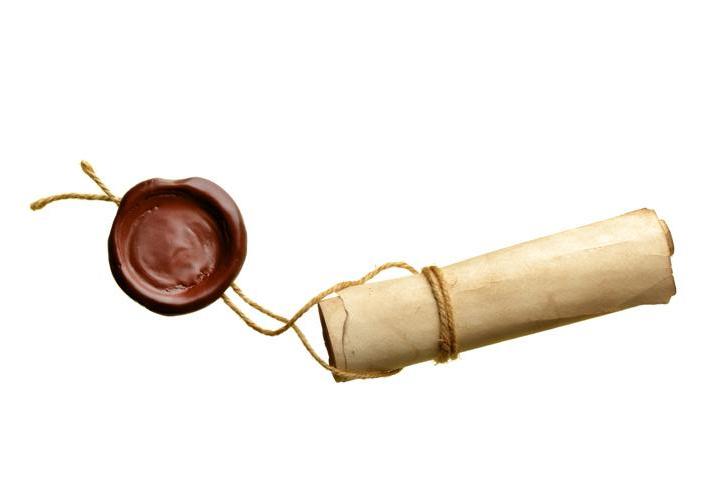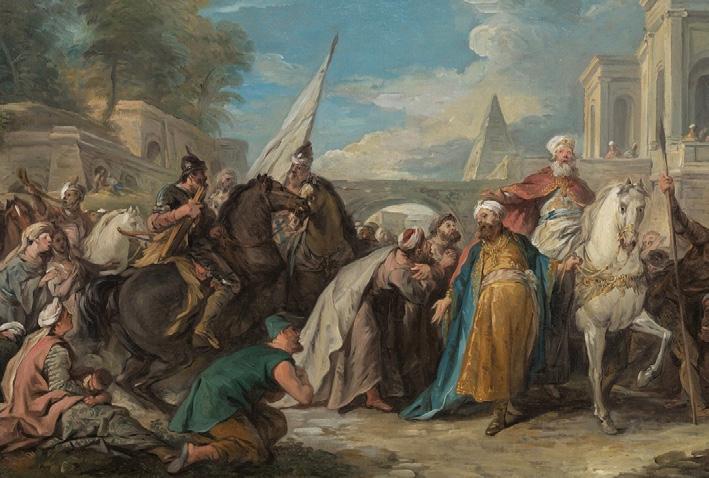
5 minute read
The Story of Purim
THE STORY OF
GUIDE TO JEWISH MONTHS REFERRED TO ON THIS TIME LINE
Advertisement
Nisan Defi ned by the Torah as “the month of spring,” it corresponds to late March or early April on the secular calendar. As the month of the Exodus, it carries the distinction of being the “fi rst month” of the Jewish calendar, although Rosh Hashanah, the Jewish New Year, is observed on the 1st of Tishrei, which is the seventh month from Nisan.
470 460
Tevet The fourth month of the Jewish year, or the tenth month when counting from Nisan. Described by the Talmud as the coldest month of the year, it corresponds to December–January on the secular calendar.
Av The tenth month of the Jewish year, or the fi fth month when counting from Nisan. Corresponds to July–August on the secular calendar.
Adar The sixth month of the Jewish year, or the twelfth month when counting from Nisan. On Jewish leap years, which occur seven times in each 19-year cycle, there are two months called Adar—Adar I and Adar II. In such years, the festival of Purim is observed in the second Adar. 434 BCE The fi rst exile: The Babylonian emperor Nebuchadnezzar conquers Jerusalem and exiles the Judean king Jehoiakim, and many of Judea’s princes and sages, to Babylonia. Mordecai is among the exiles.
430 BCE The prophecy: The prophet Jeremiah prophesies that the Babylonian Exile will last 70 years. 371 BCE The return: The Persian emperor Cyrus issues a proclamation calling on the Jewish people to return to their homeland and rebuild the Holy Temple. Some 42,000 return to Jerusalem under the leadership of Zerubbabel. Most remain in exile, dispersed across the Persian Empire.
370 BCE Building of the Holy Temple disrupted: The Cuthians, then living in the north of Israel and antagonistic to the Jews, succeed in disrupting the rebuilding of the Holy Temple.
450 440 430 420 410
Av 9, 423 BCE The destruction: The fi rst Holy Temple is destroyed, and the Jewish people are exiled to Babylonia.
372 BCE The fall of Babylon: The Babylonian empire is conquered by the Persians. 369 BCE Ahasuerus becomes emperor of Persia: The new emperor sides with the Cuthians against the Jews and issues a decree halting the building of the Temple.
366 BCE Ahasuerus’s feast: To celebrate the 3rd year of his reign, and his belief that the deadline for Jeremiah’s prophesy had passed without fulfi llment, Ahasuerus throws a feast for all the residents of his capital, Susa. Mordecai warns the Jews not to attend, but many disregard his warning and enjoy the banquet.
Vashti deposed: On the 7th day of the banquet, Ahasuerus, in a drunken rage, orders the execution of queen Vashti for her refusal to obey his order that she display her beauty to the revelers.
363 BCE Esther is taken to the palace: As part of Ahasuerus’s search for a new queen, Mordecai’s cousin and adopted daughter, Esther, is taken to the king’s harem.
Nisan 13 Haman’s plot: Haman, whom Ahasuerus appointed as his prime minister, is enraged when Mordecai refuses to bow to him, resolves to annihilate the Jewish people, and casts lots to decide the date of their destruction. Haman convinces Ahasuerus to issue a decree that all Jews— men, women, and children—be killed on the 13th of Adar of the following year. Mordecai entreats Esther to intervene with the king on behalf of her people. Nisan 15 Esther approaches the king: After three days of fasting and prayer are proclaimed by Mordecai at Esther’s behest, Esther risks her life by entering the king’s throne room unbidden and invites Ahasuerus and Haman to a private wine party. At the party, Esther refuses to reveal her request to the king, promising only to reveal it at a second wine fest. Nisan 16 The turnaround: Haman prepares a gallows on which to hang Mordecai. But in the course of a sleepless night, Ahasuerus discovers that Mordecai had saved his life from an assassination plot and has never been rewarded. When Haman arrives at the royal palace, Ahasuerus orders him to dress Mordecai in garments and parade him through the streets of Susa, proclaiming: “So shall be done for the man whom the king desires to honor!”

Haman’s downfall: At the second wine party, Esther accuses Haman of plotting to destroy her and her people. The king orders that Haman be hung on the gallows that he prepared for Mordecai and appoints Mordecai to replace Haman as his prime minister. Nisan 23 Second decree issued: Ahasuerus maintains that Haman’s decree, which bears the royal seal, cannot be revoked. Instead, he issues a second decree empowering the Jews to defend themselves against their enemies.
Tevet, 362 BCE Esther is crowned queen of Persia
357 BCE / NISAN
390 380 370 360 350 340 330
356 BCE / ADAR
Adar 13 The fi ght for survival: In battles fought throughout the kingdom, the Jews are victorious against those who attack them in an attempt to carry out Haman’s decree. Adar 14 The celebration: The Jews throughout Ahasuerus’s kingdom celebrate their victory over their enemies. But in the capital Susa, the battles continue for an additional day. Adar 15 The celebration in Susa: The victory is celebrated by the Jews of Susa one day later than in the rest of the empire. 353–349 BCE The Holy Temple is rebuilt: Seventy years after the Holy Temple’s destruction and 18 years after its rebuilding was halted, King Darius II, the son of King Ahasuerus and Queen Esther, allows the building of the Second Temple to resume. The Temple is completed four years later.



Adar, 355 BCE Purim is instituted: Esther records the story of the miracle, and the Megilah (“Scroll of Esther”) is included in the Holy Scriptures. Mordecai and Esther proclaim the festival of Purim, instituting that each year the miracle of the Jews’ salvation be commemorated on the 14th of Adar by reading the Megilah, sending gifts of food to friends, giving charity to the poor, and feasting and rejoicing. In walled cities, such as Susa, the festival is instituted to be observed on the 15th of Adar.






